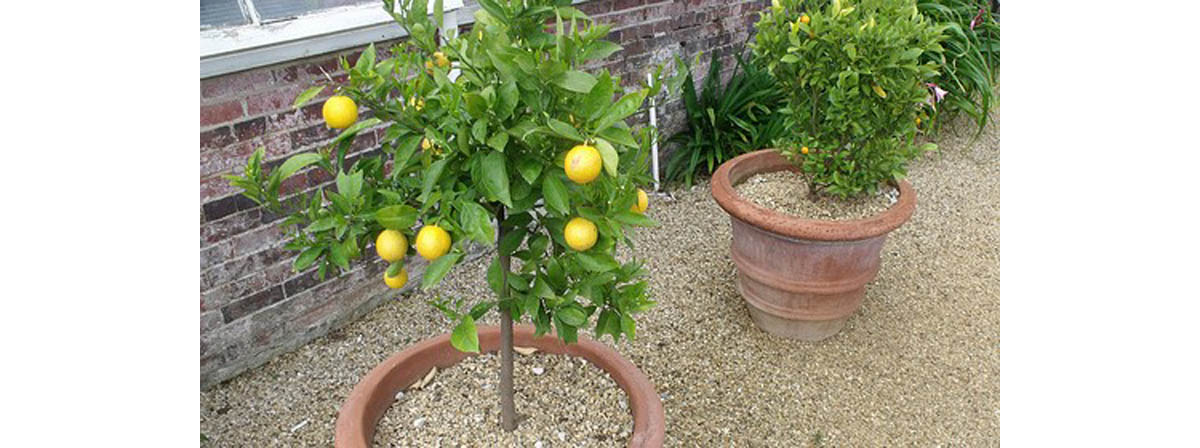Table of Contents
One of the most productive "herbs" is one of the most frequently overlooked.
4. Lemons.
If you have a 5-gallon (20-liter) pot and enough space to accommodate a 5-foot tall (1.7 meter) tree indoors in the winter, a Meyer lemon makes an interesting addition to home garden. After the first year, healthy lemons bloom all year and produce fruit all year, the Meyer lemon not exactly "sweet" but beautifully yellow and not especially tart. Be sure to prune your tree during your cooler season to keep it from growing too tall, and remember, if you get winter temperatures below freezing, you will have to protect the tree, providing it with supplemental heat all winter, or bring it indoors into a sunny place.

5. Sage.
Fresh sage isn't easy to find in most markets. When you want to use fresh sage, you almost have to cut your own. Fortunately, this herb is extremely easy to grow, free of pests, and not especially attractive to critters that might dine on your other herbs and vegetables. Even though sage is a desert plant, if you are raising sage in a pot, keep it well watered. Every other day is best unless you live in a particularly hot climate, where everyday watering is a must.
6. Rosemary.
Rosemary flavors roasts, soups, stews, potatoes, and even cookies. This bush-like member of the Mint family requires very little maintenance and can grow to the size of a small tree. The thing to remember when growing rosemary is not to overwater. Too much water, especially in a small pot, quickly kills the plant.
7. Lavender.
Lavender is another herb that isn't always easy to find fresh. It is an interesting addition to salads, casseroles, roasts, and cookies, and with its beautiful purple flowers, it is a beautiful addition to your garden or deck. Make sure the plant gets plenty of sun, but don't expect abundant growth in hot weather.
8. Dill.
Dill is fussy about weather. It grows well in cool weather, but with the onset of summer heat it is likely simply to turn orange and die. Dill produces both "weed" and seed, the green dillweed used to flavor fish and pickles, the dill seed used in baked goods, potatoes, and pickled vegetables. Easy to start, the only problem with dill is that it usually does not survive beyond the middle of spring in much of the United States.
9. Thai peppers.
The Thai hot pepper is a beautiful plant. It grows as a small bush first covered with white flowers and then yielding hundreds of green peppers that turn red as they get ripe. Most animals that invade herb gardens find the peppers themselves to hot for their taste, but both birds and squirrels like to feed on the leaves. If this happens, simply moving the pot to a less easily accesible location may do the trick.
10. Thyme.
Thyme is a seasoning many cooks like to use fresh. The delicate, small leaves don't transport very well, and it's almost essential to raise your own thyme unless you cook recipes that allow for the use of dried thyme. The herb is hard to kill, but for best yields place the pot where it gets lots of morning sunlight and minimal afternoon heat.
- Konishi T. From herb to kitchen and bedside: food factors are pharmacological molecules with antioxidant activity. Free Radic Res. 2011 Aug. 45(8):863. doi: 10.3109/10715762.2011.579826. Epub 2011 Jun 20.
- Texas Agrilife Agriculture Extension (Texas A&M University). Fall Is For Herbs. http://aggie-horticulture.tamu.edu/archives/parsons/fallgarden/herbs.html. Accessed 3 July 2013.
- Photo courtesy of Alyss by Flickr : www.flickr.com/photos/alyssssyla/5697064595/
- Photo courtesy of Elliott Brown by Flickr : www.flickr.com/photos/ell-r-brown/5970825290/


Your thoughts on this